
Making the switch to LEDs seems like a simple enough task, until you step into a light bulb aisle. The seemingly never-ending shelves of products can be daunting but understanding some LED basics can help narrow down the choices. Familiarizing yourself with terms like color temperature and color rendering index (CRI) is a good first step. Learning about wattage and adjustability is smart too. These factors, along with a plan for where the lighting will be installed and its function, can aid you in figuring out which LED products are best for you.
LED, incandescent, and CFL bulbs: What’s the difference?
First, let’s define what an LED light bulb is. LED stands for light-emitting diode. According to a blog post by energy broker Arcadia, LEDs aren’t actually bulbs. Rather, they are tiny semiconductors wrapped in plastic. Unlike incandescent bulbs, which have filaments that both heat and light when energy flows through them, LEDs have electrons that create photons, or light.
Arcadia also says LED bulbs use 75% less energy than their incandescent counterparts. To put it in perspective, LED flood lamps typically use 11 watts to create a light output similar to that of a 50-watt incandescent lamp. Examples include the Philips 60-watt Equivalent ST19 bulb. To produce the same amount of brightness as a traditional 60-watt incandescent bulb, the Philips LED bulb uses only 8 watts.
When it comes to cost, LEDs are typically more expensive than incandescent bulbs, according to lighting expert Marsha Fogarty. However, she notes, their long lifespan makes up for the initial cost. “Service life is big,” she says, “especially if you have high ceilings or places that are not easy to reach. It’s great to put something in and know it’s going to last for 25,000 hours—for residential applications, that’s years and years.”
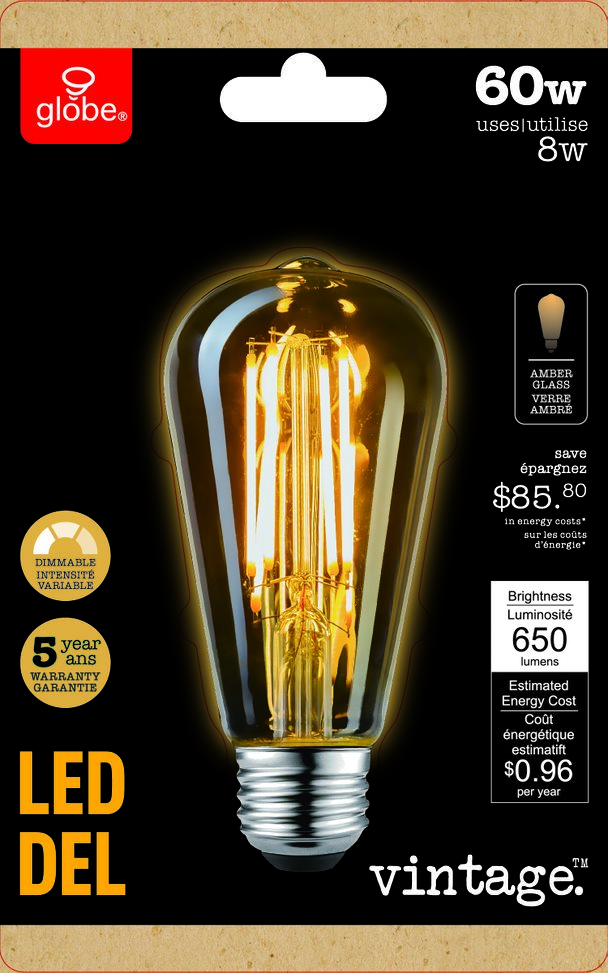
For example, Globe Electric’s 60-watt S60 light bulb lists a 3000-hour bulb life and retails for about $5 at Home Depot. The manufacturer also offers a 60-watt equivalent LED bulb; it is nearly double the price but promises a 15,000-hour lifespan. You are paying twice the cost but for five times the amount of service life.
CFL bulbs are compact fluorescent bulbs. According to Circuit Globe, CFL bulbs use low-pressure mercury vapor gas to produce visible light. CFLs, like LEDs, last longer and use less energy compared to incandescent light bulbs. For example, Feit Electric’s 60-watt equivalent uses 13 watts and has a 10,000-hour lifespan. It retails for a little over $5.
Fogarty says that CFL bulbs came to the market almost as a transitional technology between incandescent and LEDs.
CFL bulbs do have some disadvantages. They are cold-temperature sensitive and unsuitable for enclosed fixtures. According to SuperiorLighting.com, they also have a long warm up time, and come in limited color temperatures. Additionally, dimming can reduce their longevity.
Color quality and adjustability
There are a few characteristics you should be aware of when getting into the market for LED lights. Brightness—measured in lumens—is among them. According to the Department of Energy, lumens are a measure of how much light comes from a bulb. More lumens mean brighter light. However, lighting expert David Warfel says that lumens are a misleading metric because it doesn’t indicate how much light will be usable. For example, an 800-lumen LED light bulb might have a big heat sink on the bottom, so most of those lumens rise upward. That means, if you screw the bulb into a reading lamp, more light ends up on the ceiling than on your book.
Warfel advises focusing on color quality instead. “You want to look for some indication of the quality of light,” he says. “The most common metric used is called color rendering index (CRI). The higher the number, the more lifelike everything is going to look—from food on your plate to the skin on your face, it’s going to look better if it’s 90 CRI or above.”
He adds that color temperature is a key factor too. Generally, you’ll want to make sure every light in the house matches in terms of color temperature. Anything between 2700 and 3000 kelvins (K) is ideal, according to Warfel.
Another feature to consider is adjustability or dimming capability. This is especially important in multi-generational households. “I don’t think you should buy an LED bulb that isn’t dimmable anymore,” Warfel says. “I’m in my mid 40s, and according to the IES (Illuminating Engineering Society), which develops the standards for the lighting industry, I need twice as much light as my kids who are 15 and 20. My parents, who are 78 and 80 years old, need twice as much light as I do. So, they need four times as much as my 20-year-old to see at the same level.”
As we age, our eye lenses yellow and discolor, which diminishes the blue light, i.e., daylight that comes through them, Warfel says. In other words, somebody who is 60 years old is not getting as much daylight as somebody who is 25. Warfel advocates increasing color temperature as we age, so that it appears consistent and we have the same level of visual acuity over time.
A Note on LED Strip Tape |
Most bang for your buck
There are a few products Warfel recommends. The first is a series of LED lamp light bulbs from The Good Life by Technical Consumer Products, Inc. (TCP). Specifically, he advises the A19 Standard, S19, and G25 Globe models because they are similar to incandescent lighting, which makes the transition to LEDs less noticeable. “You screw them in and it’s hard to tell you’ve changed from incandescent to LED, and that’s a comfortable first step,” he explains.
The Good Life LED product line features warm dimming—from 3200K to 1800K—and a 15,000-hour rated life, according to this press release. Prices range from $5 to $10 per bulb.
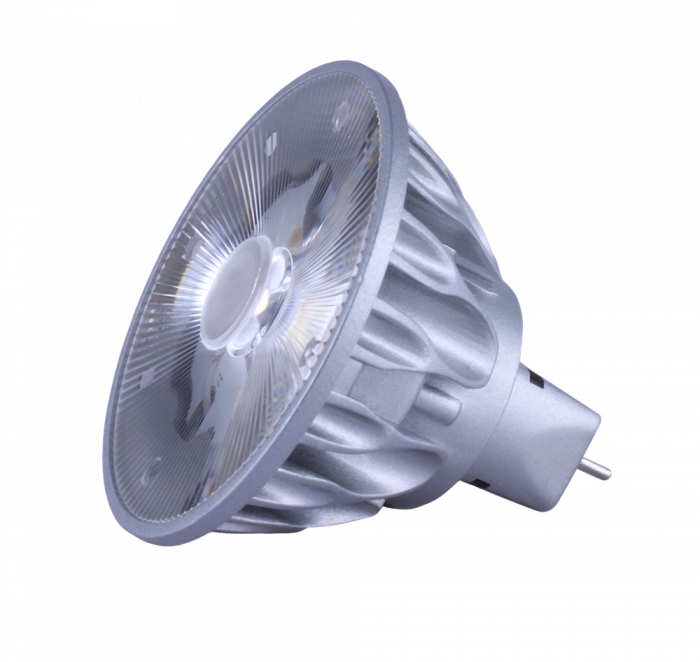
Another recommendation for LED first timers is the MR16 Spotlight from Soraa. This line of lamps is another warm-dim set of options that produce 95+ CRI. Like the Good Life series, these bulbs are available in 3200K to 1800K. “The Soraa light bulbs, which we use in spotlights, have exceptionally good color quality, meaning everything looks the way it would in natural light, or closer to it than other light bulbs,” Warfel notes. You can expect to pay approximately $45 for the Soraa MR16 Vivid Warm bulbs at retailers like 1000bulbs.com.
Lighting manufacturer Cree, which Fogarty recommends, offers a 60-watt equivalent soft white model. The bulbs come in packs of two and retail for about $8 per pack from Home Depot. According to Fogarty, Cree was one of the first manufacturers that was getting LED lighting right when the technology initially came out. She says the company puts out one of the most reliable products on the market.
She also recommends visiting Lightology, an online store that enables users to compare prices between bulbs and see which features add or subtract from cost.
In a nutshell, choosing LED lights is a matter of getting some basic concepts down, and then buying and testing products. There isn’t one light that ticks all the boxes for all demographics and room situations. As Warfel puts it, “Buying an LED light bulb can be a lifetime decision because it lasts so long, so don’t be afraid to by a couple and try them out. Find what you like and then do the rest of the house.”
_________________________________________________________________________
Brian Alvarado is assistant editor at Fine Homebuilding magazine and finehomebuilding.com. Photos courtesy of manufacturers, except where noted.
Weekly Newsletter
Get building science and energy efficiency advice, plus special offers, in your inbox.





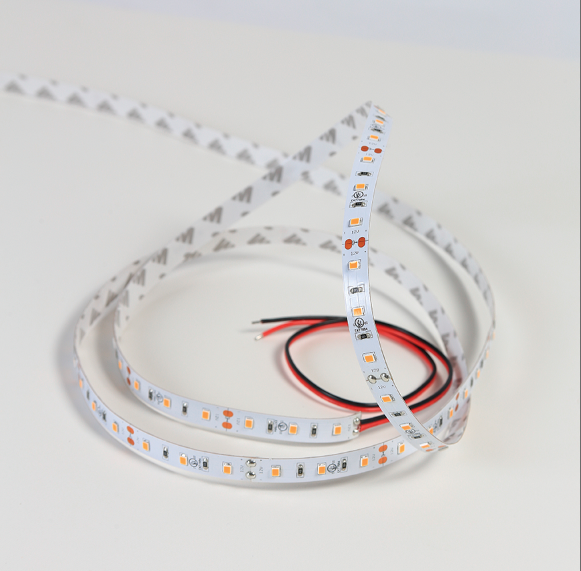
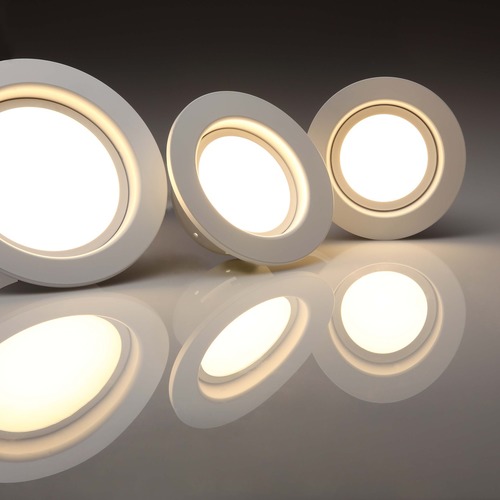
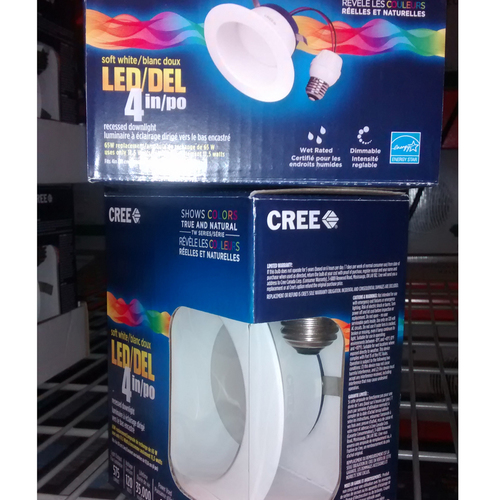
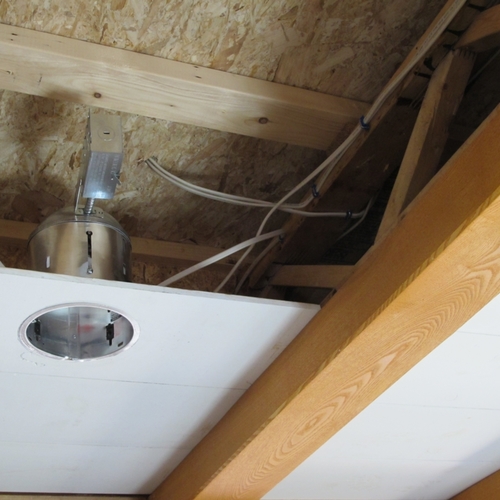
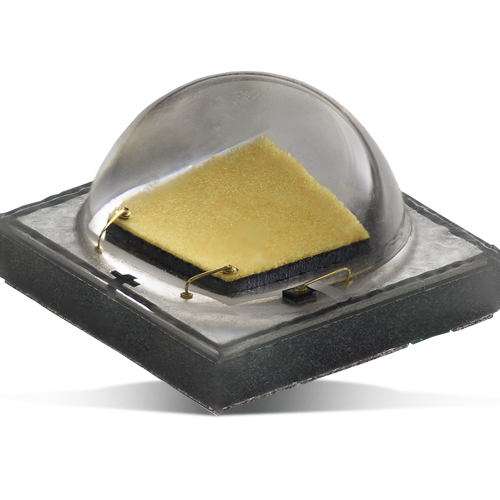






7 Comments
Note that the recommended TCP lamp has only 80 CRI, not the 90 recommended by Warfel. The warm dim capability of the TCP is nice and might be worth accepting the lower CRI. But unfortunately, as noted in the closing paragraph, it's hard to find a lamp that is "best" in every way.
That underscores the advice in the last paragraph to buy a few and try them. More specifically, I recommend getting a few simple bulbs in different color temperatures and different CRIs, and trying them in a simple table lamp to learn what you care about what what you like. Some people prefer 2700K while others want 4000K or more. Some care about CRI more than others do. If you use that testing to learn about those metrics, it can make it easier to converge quickly on something you like.
Two more items to watch for with LEDs.
Lot of low quality LEDs flicker badly at 120Hz. Some really bad ones will fully strobe. You can easily see this if you film the light at 240FPS on a smartphone. Unfortunately there is no spec for this in North America and you can't see it until installed. The worst offenders tend to be LED filament bulbs.
Many LEDs when dimmed will tend towards a green tone. This tends to be unflattering as it makes skin tone look sickly. Budget slim LED lights are really bad for this.
The dim to warm units tend to be much better for this as they have a separate ultra warm white LED emitter for low dimming. I only install dim to warm in areas that would often be dimmed (ie dining area, living room, bedroom sidelights).
Philips has a newer line of A19 bulbs, available at Home Depot, in both frosted and filament, that finally get it all right. They say "Eye Comfort" on the package, and are 90+ CRI, warm-glow dimming, and no 120hz flicker. Some of the FEIT filament bulbs also are 90+ CRI with no 120hz flicker. Waveform Lighting has a line of frosted flicker-free bulbs with 95+ CRI (with good R9 red output) and all the lab test reports (but non-dimming). I have some expensive Soraa A19 bulbs that have 95 or 98 CRI, but discovered that they have significant 120Hz flicker.
Thanks for that note about the Philips lamps--those sound great. I couldn't find them on the home depot website, but maybe it's a regional thing, perhaps available in California?
Incandescents + Halogens are peerless.
LEDs, even the best, are light beer, diet coke, Splenda, Trump tan. They just are a little weird, phony Bologna.
Substitute annually a few vehicular milk-runs with a bike ride, and cash in those 'carbon credits' with the warmest, fuzziest, most accurate light available.
The bright future of renewable energy means that you can use the absolute objectively best light source without greeny guilt.
LEDs are nice, have about 50 pucks in the ceilings. However, they're paired with dimmers and some buzz. I also have regular sockets with LEDs, no buzzing when dimmed. It's not terrible (and may occur with other bulbs as well) but it's best to know dimming behavior/buzz in advance.
Anybody know a good source for GU10 50 watt halogen replacements?
Log in or create an account to post a comment.
Sign up Log in